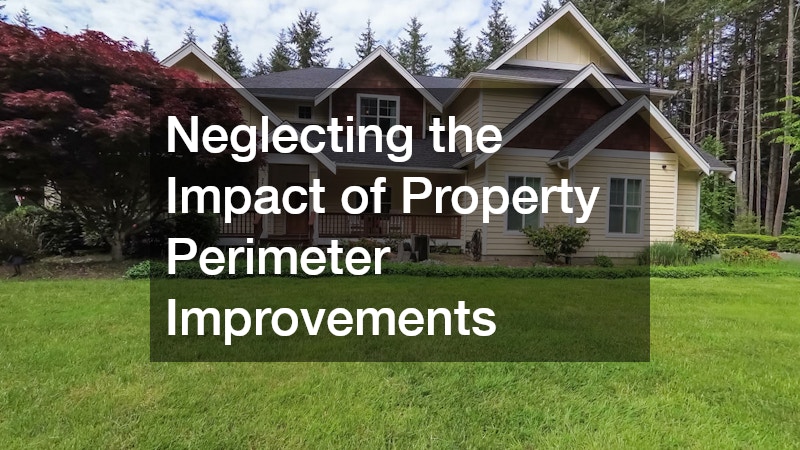Renovating an entire home is a major project that requires planning, budgeting, coordination, and a clear vision. Many homeowners start with enthusiasm only to realize halfway through that costs are rising, timelines are slipping, and results are not aligning with their expectations. Whole home renovations touch every part of a property, from structural modifications to electrical updates to cosmetic improvements. With so many moving parts, even small missteps in the planning stage can grow into costly problems down the line.
A major home transformation also requires a realistic understanding of how different project phases overlap and influence each other. For example, changes in layout may affect plumbing and mechanical systems, while new finishes may not make sense if underlying issues such as poor insulation or outdated wiring remain unaddressed. Without a clear roadmap, homeowners may find themselves redoing work or making rushed decisions without comparing options.
Understanding the most common mistakes ahead of time allows homeowners to take a proactive, strategic approach that protects their investment. The following sections offer practical, experience-based guidance to help readers make decisions with clarity, reduce stress, and get the most value from their renovation.

1. Starting Without a Clear Scope or Master Plan
One of the most costly errors in a whole house renovation is starting without a detailed master plan. Many homeowners jump straight into demolition with the intention of “figuring it out as they go,” but the result is usually delays, change orders, and confusion among the professionals involved. Working with construction contractors early in the planning stage helps clarify the timeline, outline project goals, and sequence renovations logically.
A master plan also helps prioritize upgrades so that the most critical structural and functional improvements come first, rather than being pushed aside for aesthetic updates. It prevents situations where new finishes are installed before outdated wiring or insufficient framing is addressed, forcing later repairs that undo completed work.
A project plan should detail the order of work, including structural updates, electrical layouts, plumbing relocation, insulation installation, finishes, and inspections. When a plan is finalized in advance, everyone involved shares the same expectations. This also makes it easier to identify potential obstacles, such as load-bearing walls that cannot be moved without engineering support. A comprehensive plan also assists with material procurement, preventing delays caused by lead times or backorders. Establishing a detailed plan from day one gives the renovation a strong foundation, reducing uncertainty and minimizing expensive surprises later.
2. Overlooking Room-Specific Requirements and Codes
Every room in a home has unique functional demands, but some homeowners apply generic solutions that don’t meet building codes or long-term needs. Bathrooms, for example, require waterproofing, moisture-resistant wall materials, ventilation systems, and strategic fixture placement. Consulting a bathroom remodeling contractor ensures that these critical details are addressed before surfaces are closed up. A specialist also understands how lighting, flooring, plumbing runs, and storage solutions need to work together so the room performs well under daily use rather than just looking good on the surface.
Each space within a home has its own technical requirements that go beyond design choices. Kitchens need adequate electrical circuits to support multiple small appliances, cooktops, ovens, and built-in features. Installing a backsplash or cabinetry without considering outlet location can make a space less convenient and force electricians to open freshly finished walls later. Laundry rooms often require a drain pan, appropriate water shutoff access, and sufficient ventilation for dryers. Bedrooms may need additional insulation or window upgrades for comfort, while home offices may need structured wiring or additional soundproofing.
Ignoring room-specific needs can lead to hidden risks developing over time. For example, a kitchen may not have enough outlets to support modern appliances, or a laundry area may lack proper drainage or ventilation. Building codes exist to protect the home’s structure, air quality, and occupant safety. They also help future-proof the home by ensuring that major systems can accommodate newer technology and growing family needs. Planning each space with its own technical considerations prevents costly fixes and rework in the future. A renovation that respects the functional and regulatory needs of each room is far more durable and effective, resulting in a home that not only looks updated but performs efficiently for years to come.
3. Making Exterior Decisions Too Late in the Process
Homeowners often focus largely on interiors when planning a renovation, leaving exterior upgrades as an afterthought. However, replacing roofs, gutters, siding, or exterior trim may affect insulation, structure, or water protection systems. Partnering with local roofing contractors early in the process can ensure that weatherproofing components are scheduled at the appropriate time and coordinated with interior work. When exterior updates are planned too late, homeowners risk overlapping construction phases, forcing crews to redo finished work or delay projects that depend on a dry and stable building envelope.
Another challenge is that exterior decisions frequently influence material choices for interior rooms. For example, if insulation or rooflines are changed after interior drywall is installed, walls may need to be reopened and finished again. Coordinating roofing and siding replacement before interior work begins helps stabilize temperature control and energy performance across the house. This is especially important in older homes where roofing materials, attic ventilation, or exterior sheathing may be outdated or compromised.
Exterior upgrades also influence the home’s curb appeal and long-term maintenance costs. For example, delaying roofing repairs may allow moisture to reach newly installed interior framing, insulation, or drywall. Over time, small leaks can lead to rot, mold, energy loss, and structural damage that require far more invasive repairs than a timely roof replacement. Additionally, homeowners who improve exterior systems first often gain an advantage when scheduling other trades, since the home is protected from weather disruptions and interior spaces remain stable during construction.
A well-timed exterior upgrade is both protective and strategic. Prioritizing the outside of the home in planning ensures that the structure stays dry, stable, and sound throughout the renovation timeline. By addressing exterior systems early, homeowners support the longevity of interior improvements and create a strong foundation for the rest of the renovation to succeed.

4. Neglecting the Impact of Property Perimeter Improvements
Whole home renovations often involve upgrades that extend beyond the walls of the house itself. Fencing, gates, hardscaping, and outdoor structures all contribute to how the home functions when finished. Ignoring these needs until the end can force homeowners to compromise on materials, placement, or aesthetics. Working with professionals who specialize in custom fencing allows site planning to include accurate measurements, proper line placement, and material compatibility with the overall property design.
A well-planned perimeter can also enhance security, privacy, and value. Driveways, entry paths, courtyard walls, and outdoor recreation areas should be factored into the renovation budget early so they do not get sidelined after most of the funding is spent indoors. Homeowners who plan exterior systems alongside interior renovations end up with a cohesive result that supports both aesthetics and functionality.
5. Misjudging Driveway, Walkway, and Hardscape Needs
Exterior surfaces are often overlooked until vehicles begin tracking mud into a newly renovated space or drainage issues appear after heavy rain. Choosing and installing durable hardscaping surfaces requires expertise, particularly when grading, surface strength, and winter performance are involved. Consulting a paving company ensures homeowners select materials that handle weight, temperature changes, and water runoff effectively.
Driveways and walkways are some of the most heavily used areas of a home, so they should be planned with the same attention to detail as interior floors and structural work. Poor surface preparation is one of the most common mistakes, leading to cracking, uneven sinking, or pooling water. Proper planning includes setting the right foundation depth, installing the correct base layers, and ensuring professional compaction before the top surface is installed. This effort produces longer-lasting results and reduces future maintenance expenses.
6. Forgetting About System Upgrades and Infrastructure
Renovations that transform layouts or add new rooms often require improvements to the home’s internal systems. Heating, cooling, electrical capacity, and duct layout may no longer be suitable after changes in square footage or room configuration. Many homeowners update lighting and walls without re-evaluating mechanical needs, only to discover uneven air distribution or system strain once the remodel is complete. Consulting professionals skilled in ac repair can help assess whether the current system is capable of supporting the new space demands.
Similarly, older homes may have circuits that are insufficient for today’s appliances and electronics. Planning early for infrastructure ensures the home is upgraded not just visually, but functionally. Addressing these systems at the right point in the renovation schedule avoids tearing out finished ceilings or walls later, saving both time and money.

7. Overlooking Plumbing Adjustments When Modifying Layouts
Expanding or relocating kitchens, laundry rooms, or bathrooms can require significant changes to water lines, drains, venting, and fixture placement. Homeowners sometimes assume that moving a sink or shower is a minor task, only to discover that rerouting drainage may involve opening multiple walls, floors, or ceilings. Working with a local plumbing company can help assess feasibility, code issues, venting requirements, and the most economical path for moving or extending plumbing lines.
Plumbing mistakes are among the most expensive to fix after walls and floors are closed. Improper slope in drain lines, insufficient venting, inaccessible shut-off valves, or incompatible materials can lead to leaks, sewer odors, or blockages. By planning plumbing changes early, homeowners prevent complications and safeguard long-term function and home value.
8. Removing Mature Landscaping Without a Replacement Plan
During a large renovation, trees, shrubs, or garden beds sometimes need temporary removal to permit construction access. Many homeowners underestimate the cost or time required to reestablish healthy landscaping afterward. Partnering with a tree nursery allows homeowners to consider replacement options that align with climate, soil conditions, and design goals.
Existing vegetation contributes to shading, privacy, property value, and soil stability. Losing large or established landscaping can dramatically change how a property looks and feels. A plan for temporary preservation, transplanting, or replacement helps maintain the outdoor environment while allowing the renovation to proceed. Mature landscaping takes years to redevelop, so thoughtful planning in advance ensures that the finished project looks just as refined outside as it does indoors.
9. Ignoring Tree Management When Construction Equipment Is Involved
Heavy machinery, building materials, and construction crews can damage trees by compacting soil, breaking roots, or tearing bark. Homeowners often assume that if a tree is not being removed, it will remain healthy after construction, but this is not always the case. Bringing in a tree trimming company before work begins can help evaluate the health of existing trees, remove vulnerable limbs, and recommend protective measures to avoid damage.
Trees close to the foundation, driveway, or new additions may need selective pruning or stabilization to prevent hazards. When protective barriers, root guards, and proper clearing are planned early, trees remain healthy long after the renovation concludes. This planning helps preserve property value, reduces long-term maintenance needs, and ensures that construction runs safely and efficiently.

10. Skipping Roof and Structural Coordination When Expanding the Home
Whole home renovations sometimes include additions, dormers, or reconfigured rooflines. Homeowners may assume that roof modifications only mean adding shingles or extending coverage, but structural adjustments may also be needed. Consulting with a residential roofing company during the architectural phase ensures that load calculations, tie-ins, waterproofing transitions, and ventilation systems are engineered properly.
Rooflines must shed water efficiently, handle snow loads, and create a proper seal where new sections meet existing structure. When the roof plan is finalized before walls are framed, the home receives better protection against leaks, temperature fluctuations, and long-term wear. Planning these details early eliminates the need for costly rework and preserves the durability of the finished renovation.
A whole house renovation is a major undertaking that affects nearly every component of a property. Mistakes often happen when planning is incomplete, decisions are rushed, or technical requirements are misunderstood. Approaching the project with a clear scope, the right specialists, and a well-structured timeline helps control budget, improve stakeholder communication, and produce long-lasting results. With careful preparation and thoughtful collaboration, homeowners can transform their spaces successfully, protect their investment, and enjoy a home that performs beautifully for many years to come.
